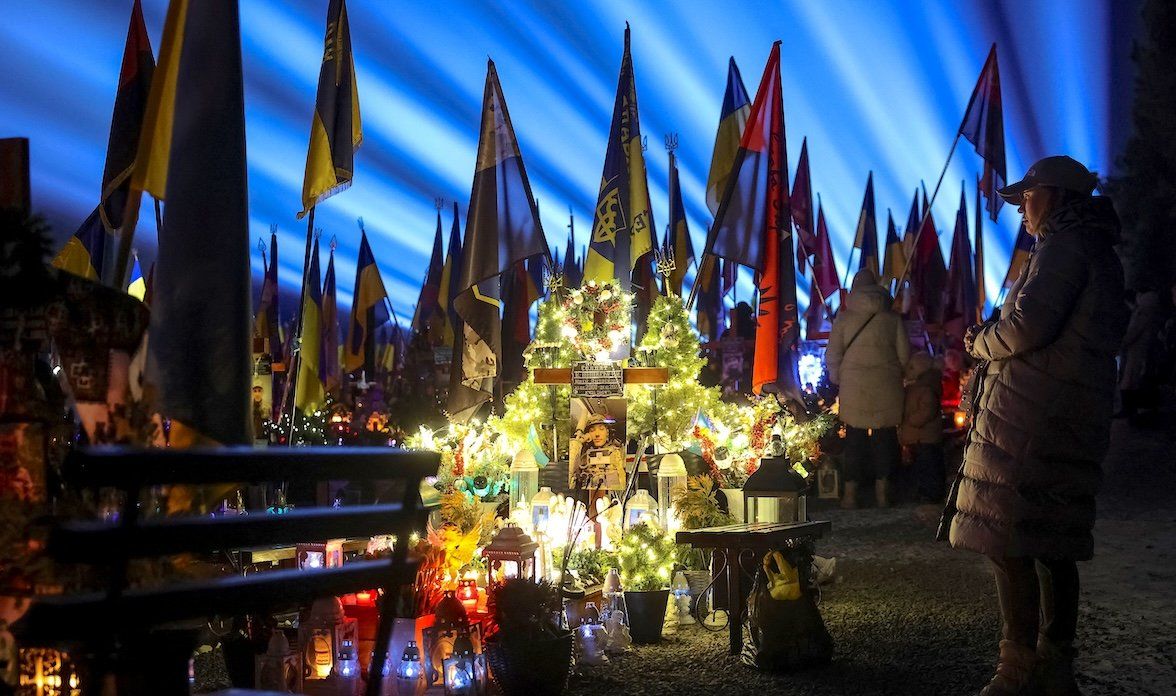Monday marks three years since Russia launched its full-scale invasion of Ukraine, triggering Europe’s largest and deadliest war since World War II. In the run-up to the grim anniversary, Russia reportedly launched its
biggest drone attack yet on Saturday night, targeting 13 Ukrainian regions with a record 267 drones.
Since returning to office, US President Donald Trump has pushed aggressively – and controversially – for a settlement to the conflict. He has engaged Russia directly while clashing openly with Ukrainian President Volodymyr Zelensky even as Washington continues, for now, to support Kyiv.
Meanwhile, EU and world leaders are meeting in Kyiv on Monday to show their support for Ukraine and Zelensky, who said Sunday he’d be willing to step aside as president in exchange for Ukraine’s NATO membership.
With the coming weeks likely to bring about a significant turning point in the conflict, here’s a look at several key indicators of where things stand after nearly 1,100 days of war.
The front lines: Russia controls a fifth of Ukraine
In the early days of the war, Russia swept into Ukraine from the North, East, and South, taking large swathes of territory, and even reaching the gates of the capital, Kyiv. But the Kremlin war machine proved clumsy and poorly equipped, and by late 2022, Ukraine, with growing Western assistance, had pushed Russia back substantially to positions only in the East, where Putin consolidated his forces. Over the past year, Russia has gained momentum again, slowly grinding westward across the Donbas, village by village, gaining about 1,600 square miles since January 2024.
All told, Russia now controls about 20% of mainland Ukraine, including the Crimean peninsula, which it seized in 2014.
Meanwhile, since August 2024, Ukraine has held a small patch of Russian territory in the Kursk region, where Moscow has called in North Korean troops to beat back the Ukrainian advance.
The casualties: no firm figures
Neither side has been transparent about its losses, because of the huge propaganda and strategic value of obscuring these figures.
But open-source sleuthing by the independent Russian outlet Mediazona puts the Russian death toll at about 100,000. For context, that number exceeds the total number of Soviet and Russian combat fatalities in every war Moscow has fought since World War II combined.
Independent analysis of Ukrainian records, meanwhile, puts the number of Ukrainian soldiers killed at just under 70,000.
Separately, the UN has recorded at least 12,300 Ukrainian civilians killed by Russia, which is accused of committing war crimes in areas of Ukraine that it has occupied during the conflict.
For each side, the number of wounded runs well into six figures.
The Aid: The US is key, even if it’s not the biggest source of funds
Since February 2022, Ukraine has received about $280 billion in military, humanitarian, and economic assistance. The US is the largest single-country contributor, responsible for about $115 billion, but the EU has contributed more overall than Washington, sending nearly about $170 billion to Kyiv.
President Trump has threatened to cut support for Ukraine as part of his strategy of forcing a negotiated solution to the conflict – but so far Washington has not suspended military aid.
Polling: Support for a negotiated solution is growing – everywhere
In the US, half of Americans polled in December said they favor a quick end to the war, even if it means Ukraine has to surrender territory. This is down nearly 20 points since August 2022.
In the EU, a strong majority of those polled in February see support for Ukraine as an important expression of European values. But a separate study done late last year also showed that support for the idea of backing Ukraine “until it wins” has cratered in large EU countries: A negotiated peace involving territorial concessions to Russia is now the more popular idea in Germany, Italy, and France.
In Russia, support for the war remains near 80%, according to the independent pollsters at the Levada Center. But 61% also favor peace talks to end the conflict, the highest mark since the war started. (Does polling have value in a system like Russia’s? It depends on what you want to measure. See our explainer interview on that here.)
What do Ukrainians think?
Just over half of Ukrainians polled by
Gallup late last year said they favored a negotiated end to the conflict, even if it meant surrendering some territory.
